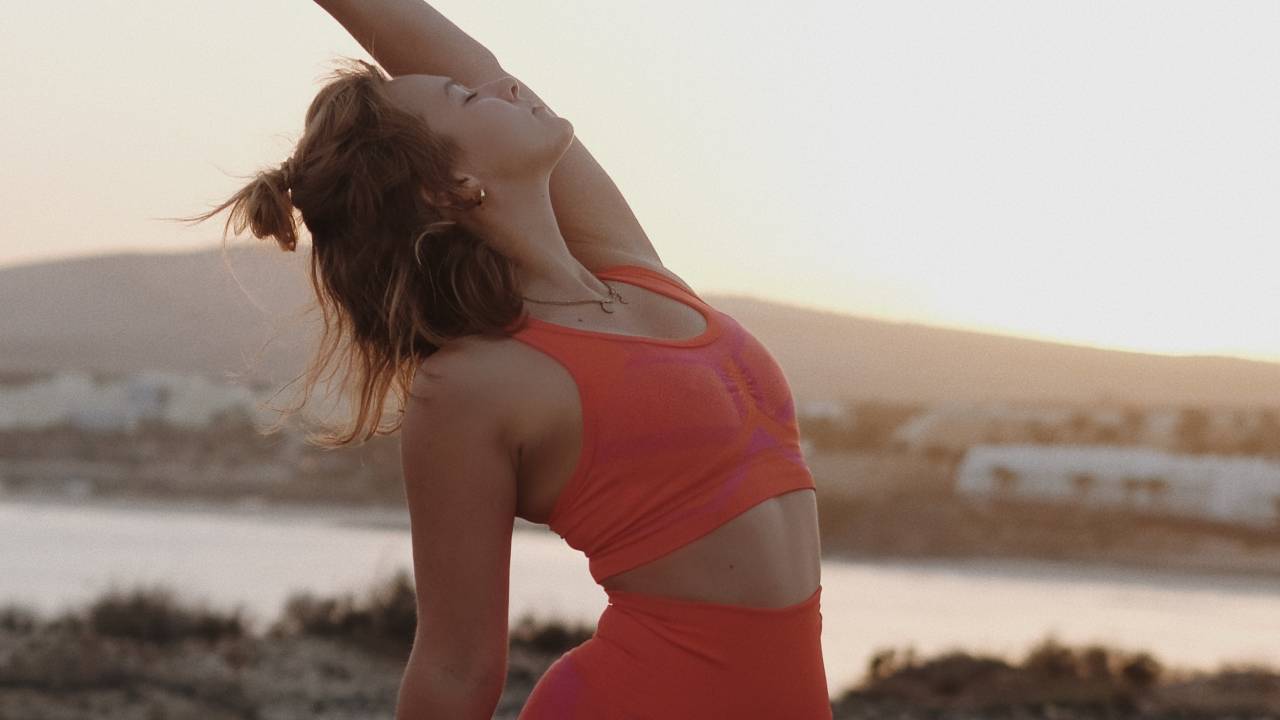
Yoga can help to stimulate the digestive system through the various movements a sequence flows through. Yoga involves forward bends, backward bends, twist, standing and balancing postures. All these movements can help stimulate the digestive fire, which some people might need after consuming rich foods over the Easter weekend.
We've picked 5 of the simplest yoga moves that can be adapted for most bodies and can be easily performed on the best yoga mat. Most of these postures are to be practiced a few hours after eating, and it's not advised to do this sequence straight after a large meal.
Before we get into the yoga flow, feel free and empowered to use support where you need to. We’ve provided ideas of where a yoga block may come in handy and if you need more assistance with this, take a look at our guide on how to use a yoga block.
1. Hero pose
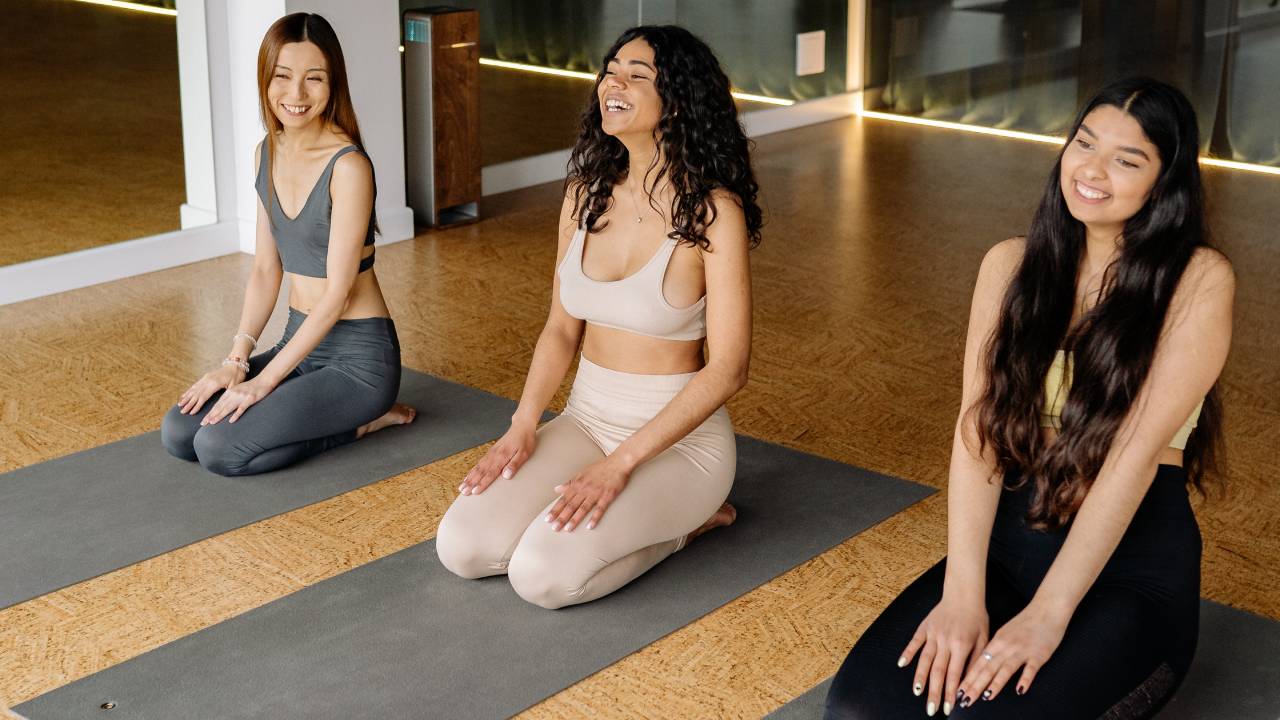
The hero pose is great for digestion and is one of the only yoga postures that you can do straight after eating. By sitting calmly with your spine straight, this can help aid digestion without any extra demands on the body. The key to making sure you are comfortable here is to use props. You shouldn’t have any pain in your knees so if you do, or you’re struggling to sit up straight, use a block underneath your buttocks. The other option is to place a rolled up blanket or the best yoga towel behind the knees.
Step 1: Sit back on your heels with support if needed. Take as much support as you need so you can take your weight back on to your heels and your thigh muscles can relax.
Step 2: Place your hands on your thighs, palms down. You should be able to sit without using your hands to weight-bear.
Step 3: You can rest here for as long as you want. There’s the option of taking a few breaths then moving into the next posture, or you can meditate here.
Get all the latest news, reviews, deals and buying guides on gorgeous tech, home and active products from the T3 experts
2. Downward facing dog

Downward facing dog helps to shift your focus and is good for lifting energy. As you're inverting the body, do this once a few hours have passed since last eating, otherwise it may make you feel a little worse for wear.
Step 1: From hero pose, place your hands forward towards the top of your mat. Spread your fingers wide.
Step 2: Lift your buttocks, tuck your toes and send your hips towards the ceiling.
Step 3: You can keep your knees bent in your downward dog but keep taking the weight back towards the legs so your body weight through the shoulders becomes lighter.
Step 4: Take 3-5 deep breaths before stepping the right foot between the hands, ready for the next pose.
3. Dragon pose
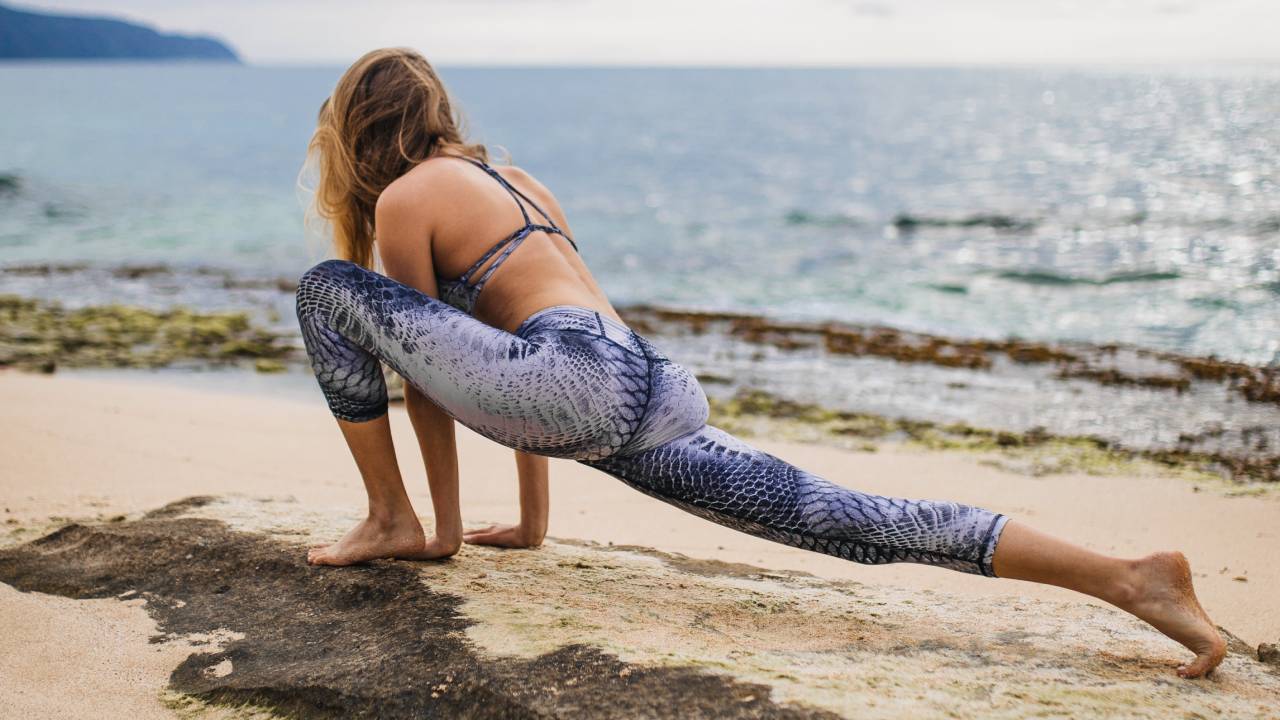
Dragon pose is a deep lunge position so it’s perfect for opening the hips but also producing some freedom through the lower abdomen and back. This can be helpful to open up the body and specifically, the areas that we tend to collapse into when we’ve overeaten. If you’re anything like me, after a big meal, I become sedentary and hunched on the sofa so opening the hips, lower back and abdomen can be beneficial to aid digestion.
Step 1: From downward dog, your right foot should now be between your hands. If this movement from downward dog is difficult for you (which is not uncommon), step forward as far as you can and then try taking your right hand to your right heel and use your arm to help move the foot forward, between your hands.
Step 2: Bring your right foot to the outside of your mat and place your hands on the inside of your foot.
Step 3: There are a couple of options for how you place your hands in this posture. You can place your hands on blocks, hands on the floor or even forearms to the floor. Find the one that suits your body.
Step 4: Stay here for a few, deep and conscious breaths before slowly edging out and repeating with your left foot forward.
4. Twisted lunge
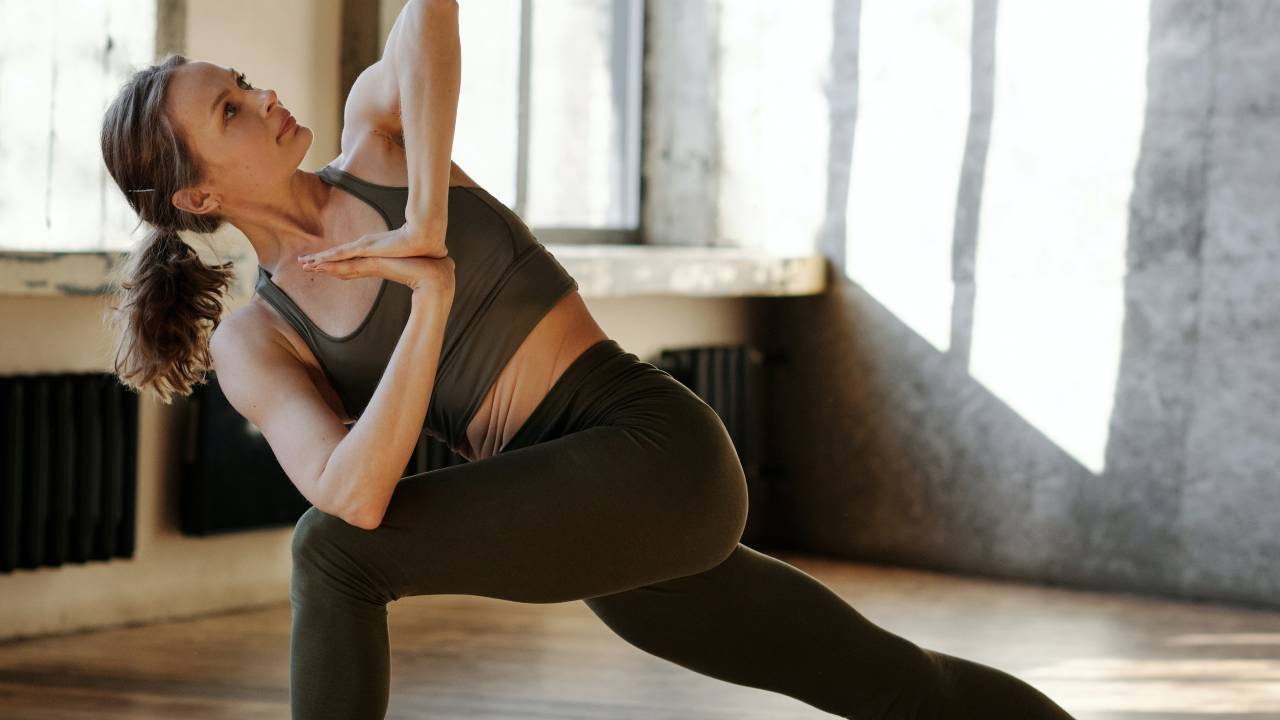
From Dragon Pose, you can come into a releasing twist. Twisting is good for digestion, helping to place a little pressure on the digestive tract. Again, this is one to be done a few hours after eating.
Step 1: Swap your legs again so you’re starting with your right foot forward. You can do this swap through another downward dog if you like. This time, keep your foot between your hands.
Step 2: Placing your left hand onto the floor or a block, lift your right hand off the floor and up towards the ceiling. Turn your chest out to the right side as you do this.
Step 3: Stay here for a few deep breaths before changing legs. With your left foot between your hands, place your right hand onto the floor or a block, and lift your left hand up into the twist.
5. Triangle pose
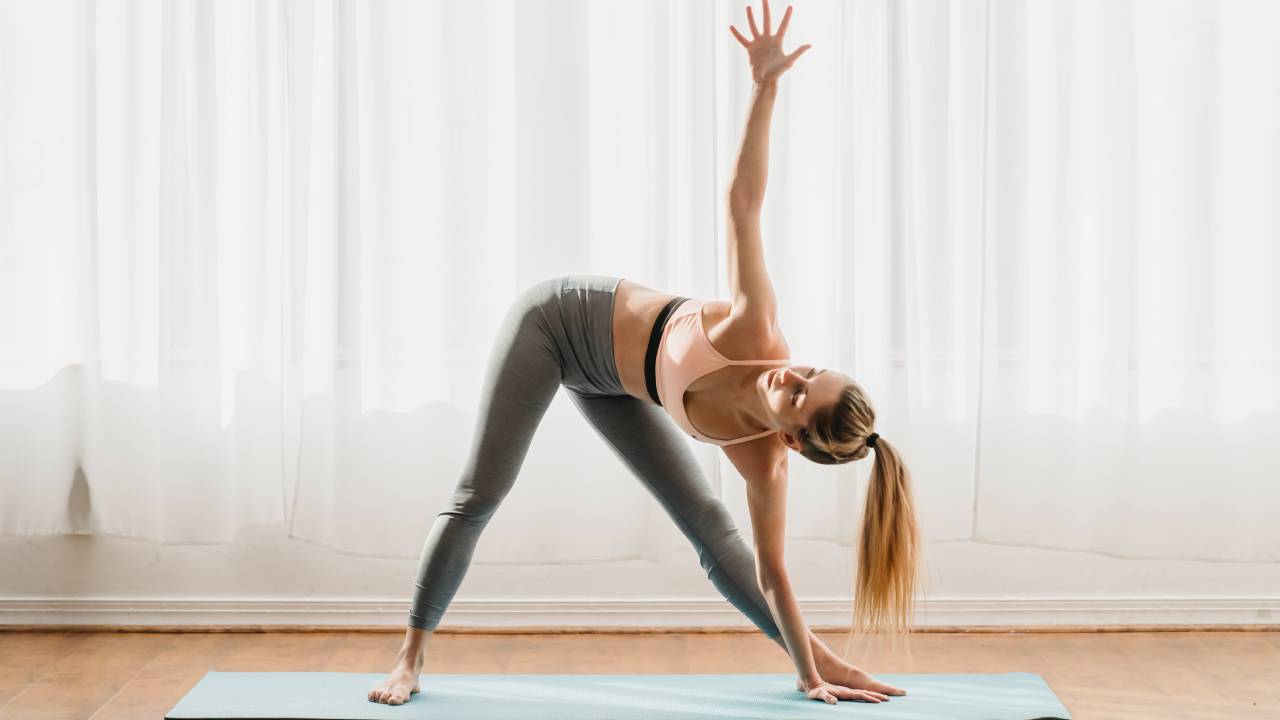
Similar to the twisted lunge, triangle pose twists the spine gently and helps to stimulate digestion. It’s important to practice this a few hours after eating. To ensure you aren’t straining to reach the floor, you can place your hand on your shin or a block.
Step 1: Come to stand, facing the long edge of your mat. Step your feet out wide, with around a leg’s distance between your feet.
Step 2: Turn your right toes out to face the short edge of your mat. Turn your left toes slightly in, so your foot is now on an angle. Press into your left heel and the left side of your left foot.
Step 3: Inhale and lift your arms to shoulder height, stretching from your shoulders to your fingertips. Lift your right arm up, next to your right ear.
Step 4: Exhale and start to fold and reach over your right leg as if you’re reaching beyond your right foot. Shift your hips to the left as you do this.
Step 5: Place your hand onto your right shin or a block on the outside of your right foot. Lift your left arm up, fingers pointing towards the ceiling. You can look straight ahead or if your neck feels OK, you can turn to look at your left thumb.
Step 6: Continue to turn your chest, rolling your right ribs forward and your left ribs back. This is where you get the twist in the spine and abdomen.
Step 7: Take a few, deep breaths here before pressing into your feet and lifting back up, arms reaching out from the shoulders. Turn your right toes in on an angle and point your left toes out. Repeat, folding over the left leg.
Kat has 10 years of yoga teaching experience with further training in supporting injured students. She is qualified to teach Yin Yoga, Hormone Yoga Therapy and more traditional forms of Hatha yoga. She also has a certificate as a Yoga Therapy Practitioner.